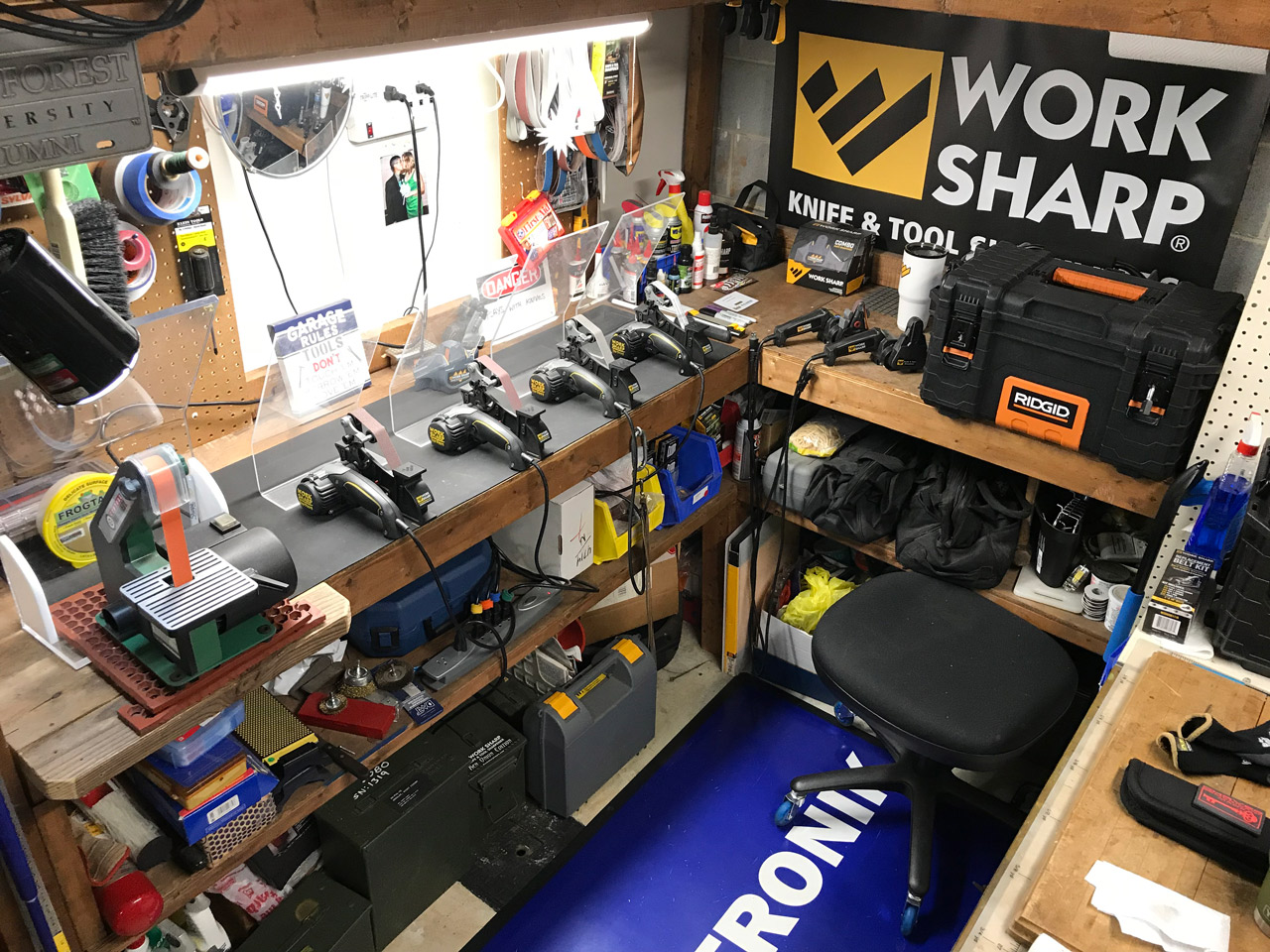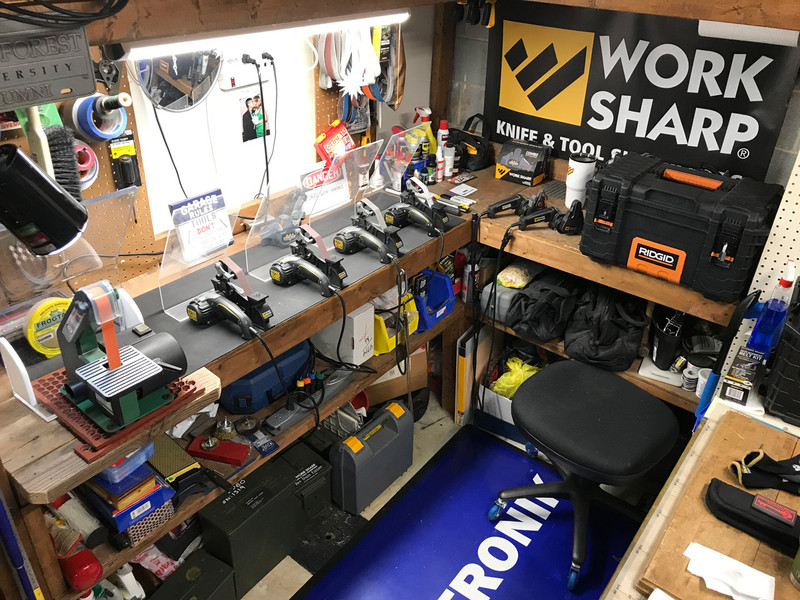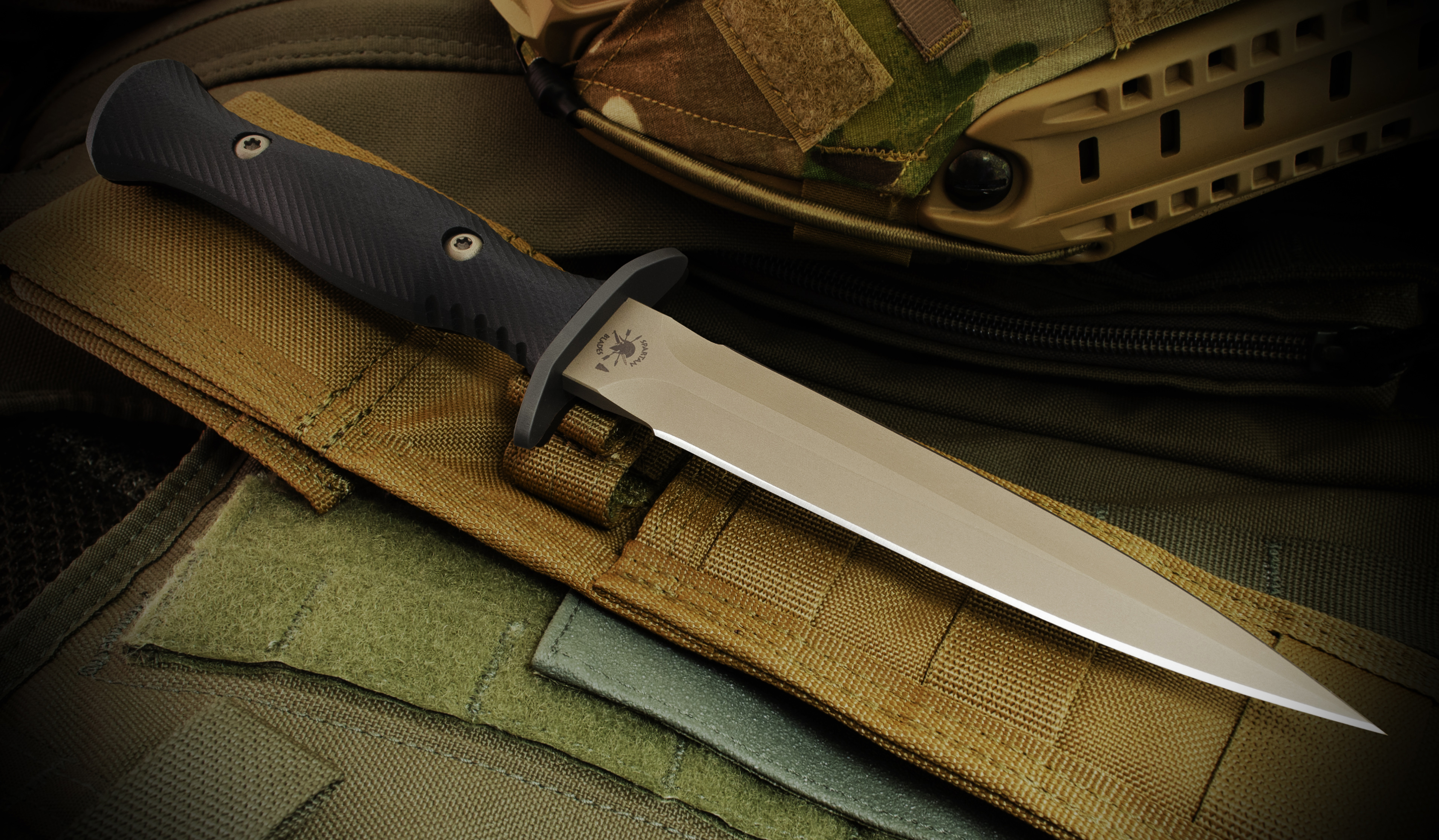Crucible Particle Metallurgy (aka CPM) steels are very popular today on high end knives both of the production and custom made varieties. They offer a very high level of performance and enhanced edge holding capabilities that make them very popular for use with hunting, outdoor, and tactical knives. These are the genres that benefit the most from the edge holding power of these steels, but conversely, they are also very difficult to resharpen because they are so hard. There’s a trade-off, you see. The mistake that a lot of folks make when it comes to CPM steels is to take the blades to the point where they are totally dull and then when they try to resharpen, they find out it’s a task and a half to do it. It consumes a great deal of time, compared to lesser grades of steel like 154CM, AUS-8, 440C, and others. Crucible Industries from Syracuse, NY, is the sole producer of all grades of CPM steel. As you can imagine, this company is a major supplier of blade steel to the knife industry. If you are into knives at all, chances are good that you have some knives already in your collection that have some grade of CPM steel. Therefore, it is important to know how to properly care for these grades of steel. Hopefully the information presented here within this blog article, you will find useful and help alter your approach to the proper care of your knives that have CPM steels.
Before we dive into the meat of this, let’s first discuss what grades of CPM steels we are talking about. You’ll find these across the board with high end factory knives and custom knives. Grades such as but not limited to: CPM 154, CPM 20CV, CPM S30V, CPM S35VN, CPM S45VN, CPM S90V, and CPM S110V. S30V, 20CV, and S35VN are the most common you will find in high end production knives and custom knives. Regardless of the exact grade, all CPM steels are manufactured in the same manner. Fine particles of steel are produced via gas atomization, from an alloy melt. The atomizer converts a liquid stream into a fine spray of droplets. The droplets then solidify into powder particles, which in turn are packed into steel cans that are hermetically sealed. The cans are then exposed to high temperature and high pressure to transform the powder contained inside, into dense steel. The final process involves standard mill processing which results in a finished bar or sheet of steel. In a nutshell, this is the way CPM steels are manufactured.
To further understand CPM steels, I contacted Bob Skibitski who is the Senior CPM Product Metallurgist at Crucible Industries, to shed some light on this. Skibitski was a part of the development of these steels for the knife industry. “When it comes to sharpening you need something hard enough to remove Vanadium carbides and Niobium carbides, which are around 82 HRC, without getting the material over the tempering temperature,” said Skibitski. The temperature range that he refers to is around 350 to 400 degrees Fahrenheit. “This is why I prefer manual sharpening methods and keeping the knife cool enough to be held in your hand,” Skibitski adds. Knifemakers use slack belt grinders to sharpen their blades, and there are powered sharpeners out there like the Work Sharp Ken Onion Edition sharpener that uses abrasive belts for sharpening. They key here would be to not grind on the steel until it gets too hot to hold. This is what Skibitski means. If you must grind on an edge extensively, having a jar of water close by in which you dunk the blade in every few passes across the belt will keep things cool and not ruin the heat treat. “Any mechanical based grinding should be followed up by a manual technique for optimum performance,” Skibitski advises. “Say you have a coarse grit belt and you see a slight color change in the steel on the edge, light brown/light blue. If you let it cool and go back over it with a finer grit and don’t overheat it, then you’ll be fine,” he says. “An overall overheating can draw back the temper and soften the blade in a specific area,” he cautions. Based on what Skibitski says, starting off with a powered method to obtain your sharp edge then fine-tune it in the rest of the way via manual methods would be the best, depending on your sharpening skill level.
The Spartan-Harsey Dagger is just one of the knives Spartan Blades makes with CPM S35VN Steel
CPM steels are notorious for being hard to sharpen because of its density. Letting a CPM blade go until completely dull then try to resharpen it is a task in and of itself. It will almost test your patience! I run a sideline business of knife and tool sharpening and I have sharpened just about every knife steel there is currently. Including a lot of CPM steels. I use the Work Sharp Ken Onion Edition sharpener with the Blade Grinding Attachment, there are four identical ones across my sharpening bench so I don’t have to stop and swap out belts. I find that if someone gives me a dull CPM blade, I can have it back in service in just a matter of minutes. When I sharpen, the blade usually gets warm to the touch. And no where near the danger zone of altering the temper. Not everyone has the equipment that I do, so for those of you with manual sharpeners, it’s best to invest in some diamond sharpeners of your choice. Any that are manufactured by DMT, Spyderco, Lansky, GATCO, Smith’s, and even Work Sharp will do the trick. Remember the vanadium and niobium carbides that Skibitski referred to earlier, and how those needed to be removed? Diamond sharpeners are the ticket to getting this done. Diamond cuts more aggressive and lasts longer as well. When you have a new knife with a CPM blade, consider touching the edge up more frequently as opposed to full-on re-sharpening. When the edge loses its bite but not deformed, this is when you break out the sharpeners and get to work. Bring that razor sharpness back. This will depend on how often you use the knife as well. The more you use it the more you will need to touch up. A touch up is usually a few minutes tops. It surely beats a full resharpening via manual method, trust me on this!

The author's designated space set aside just for the task of knife sharpening
All of Spartan’s Gold/elite Line knives use CPM-S35VN and soon CPM-S45VN steel, as do other manufacturers. There are a lot of other manufacturers that use S30V, S90V, CPM154, and so forth in their high end knives. The tips and information presented here work with ALL CPM steels across the board. With a little practice and discipline, you can maintain all your CPM knives at peak performance. The key is being proactive and staying on top of it. Once you acquire the equipment necessary to facilitate this, the rest comes easy.



